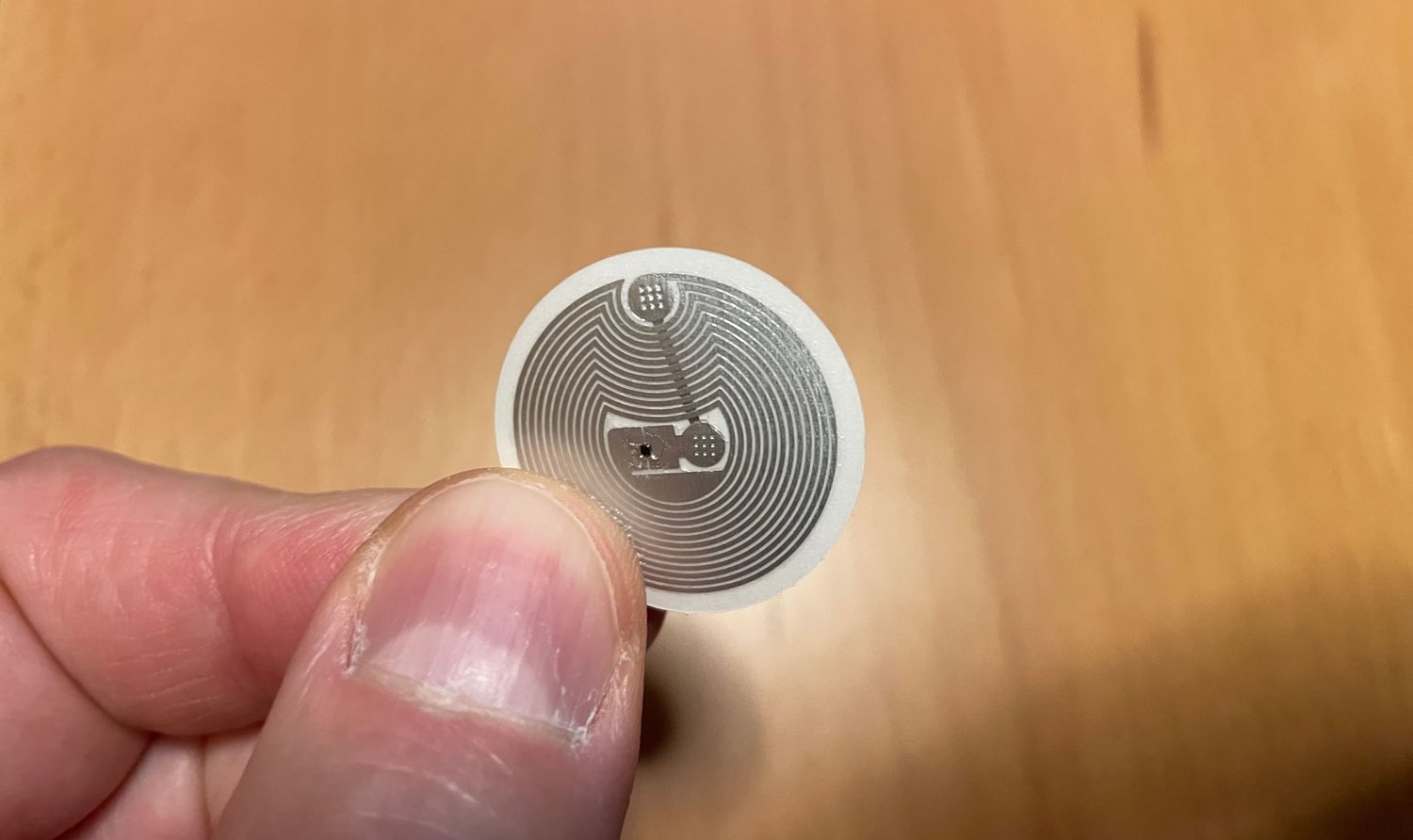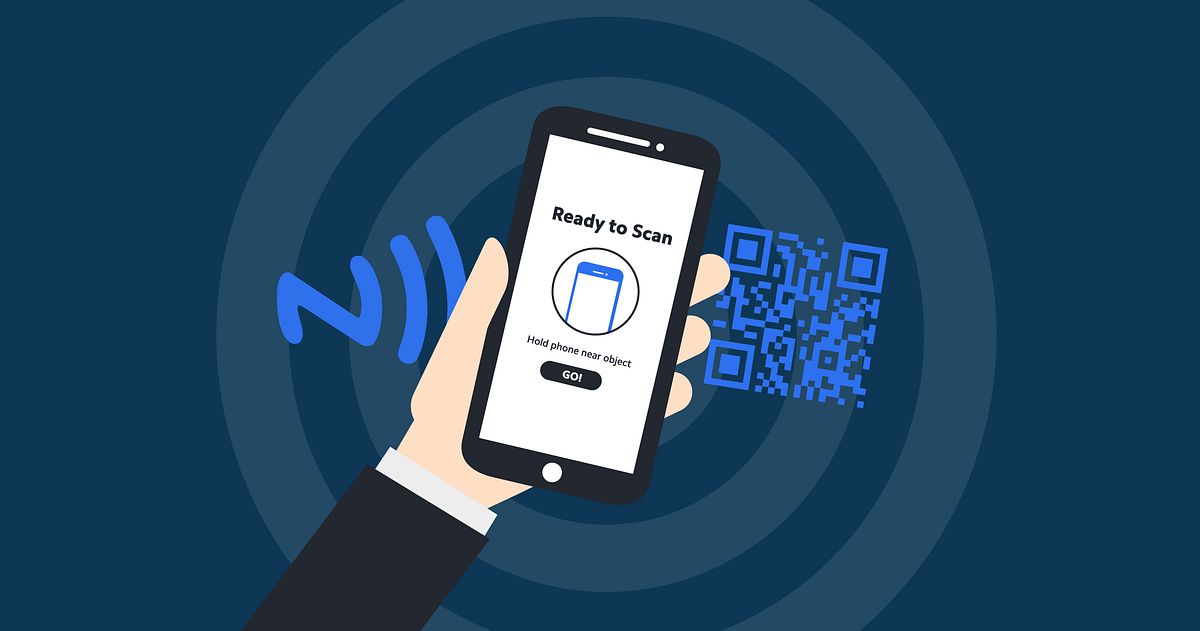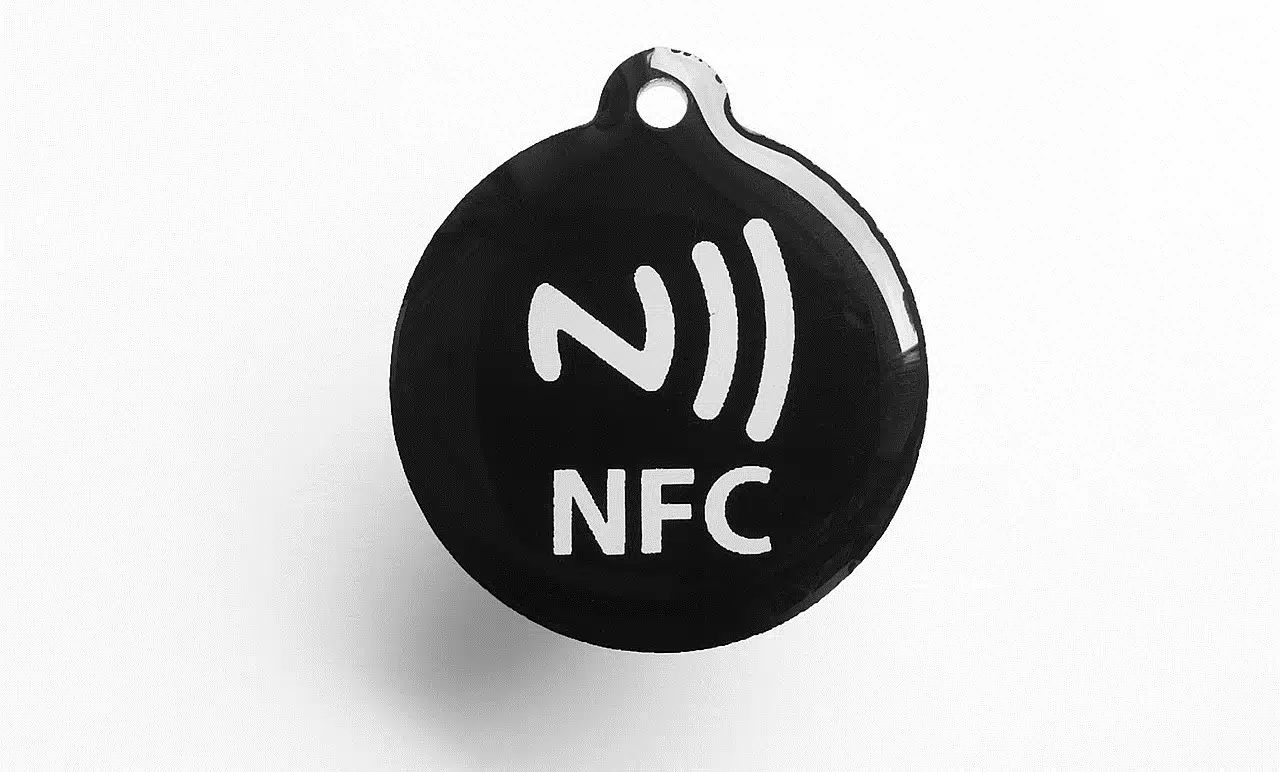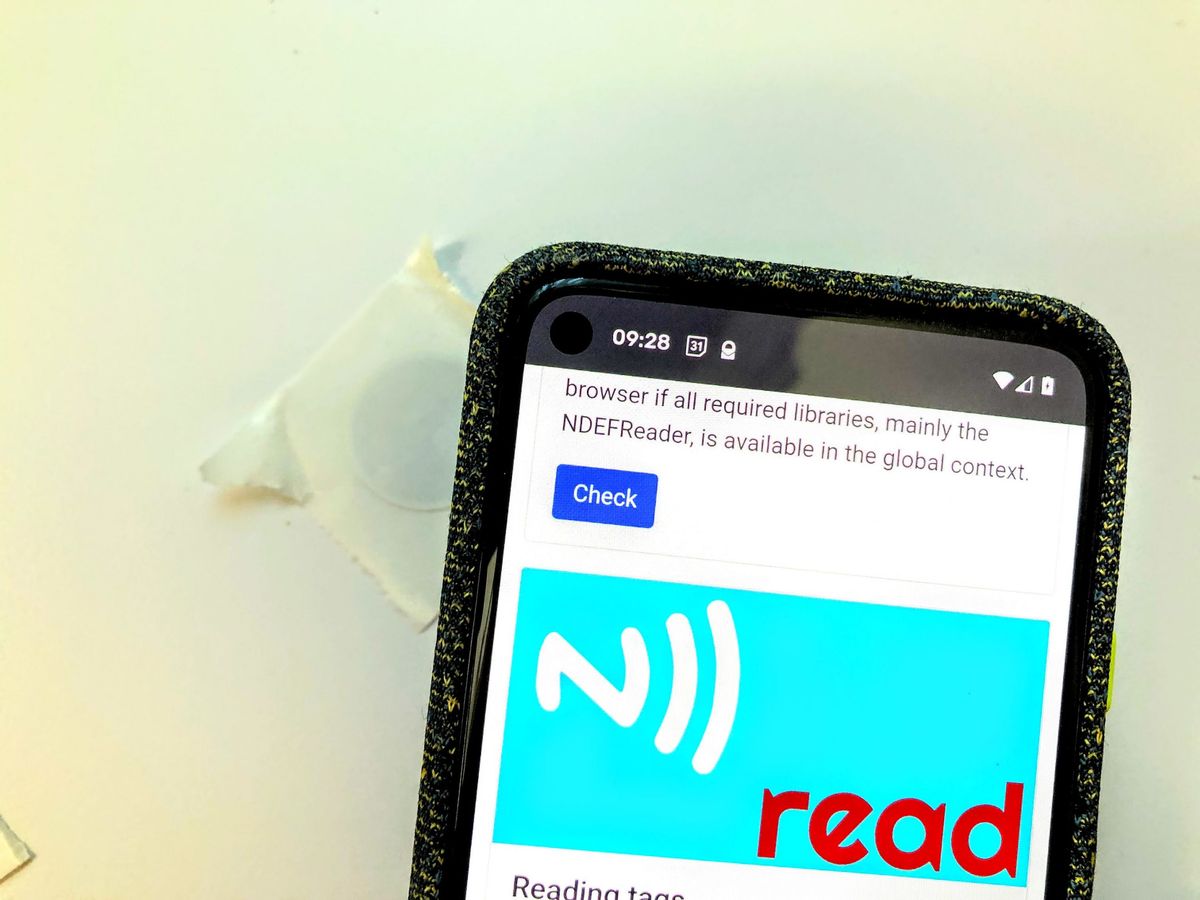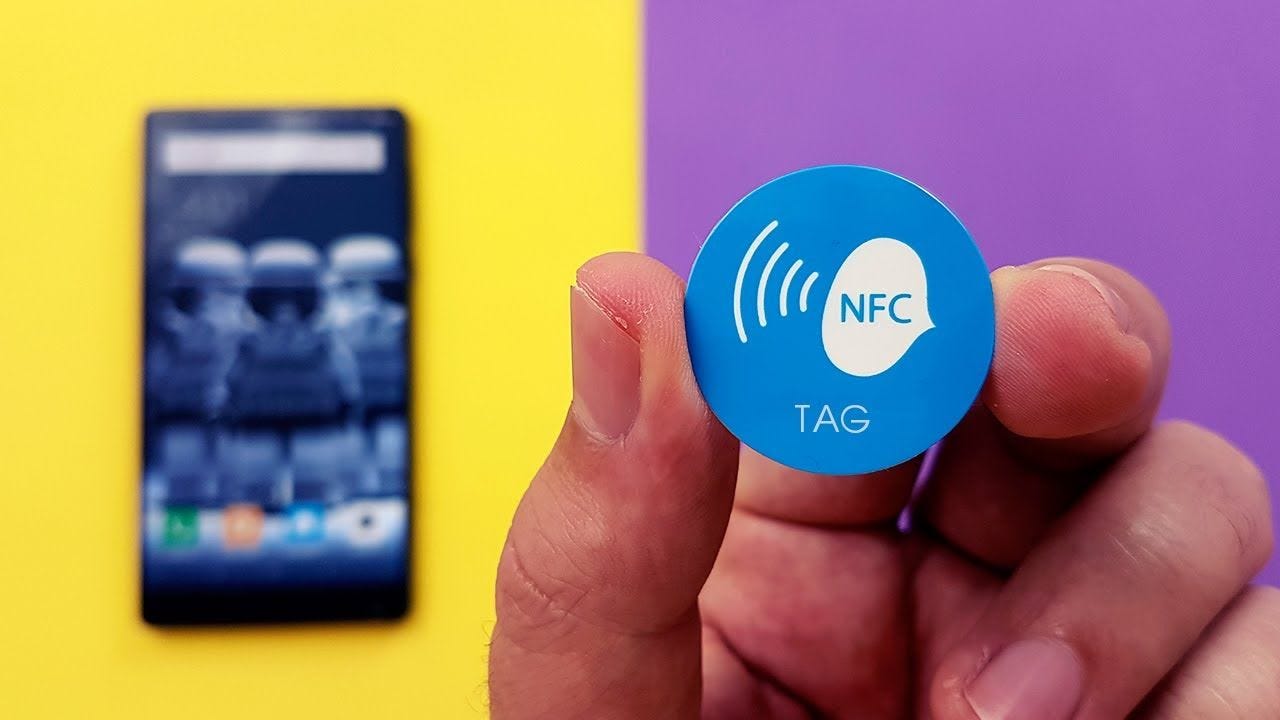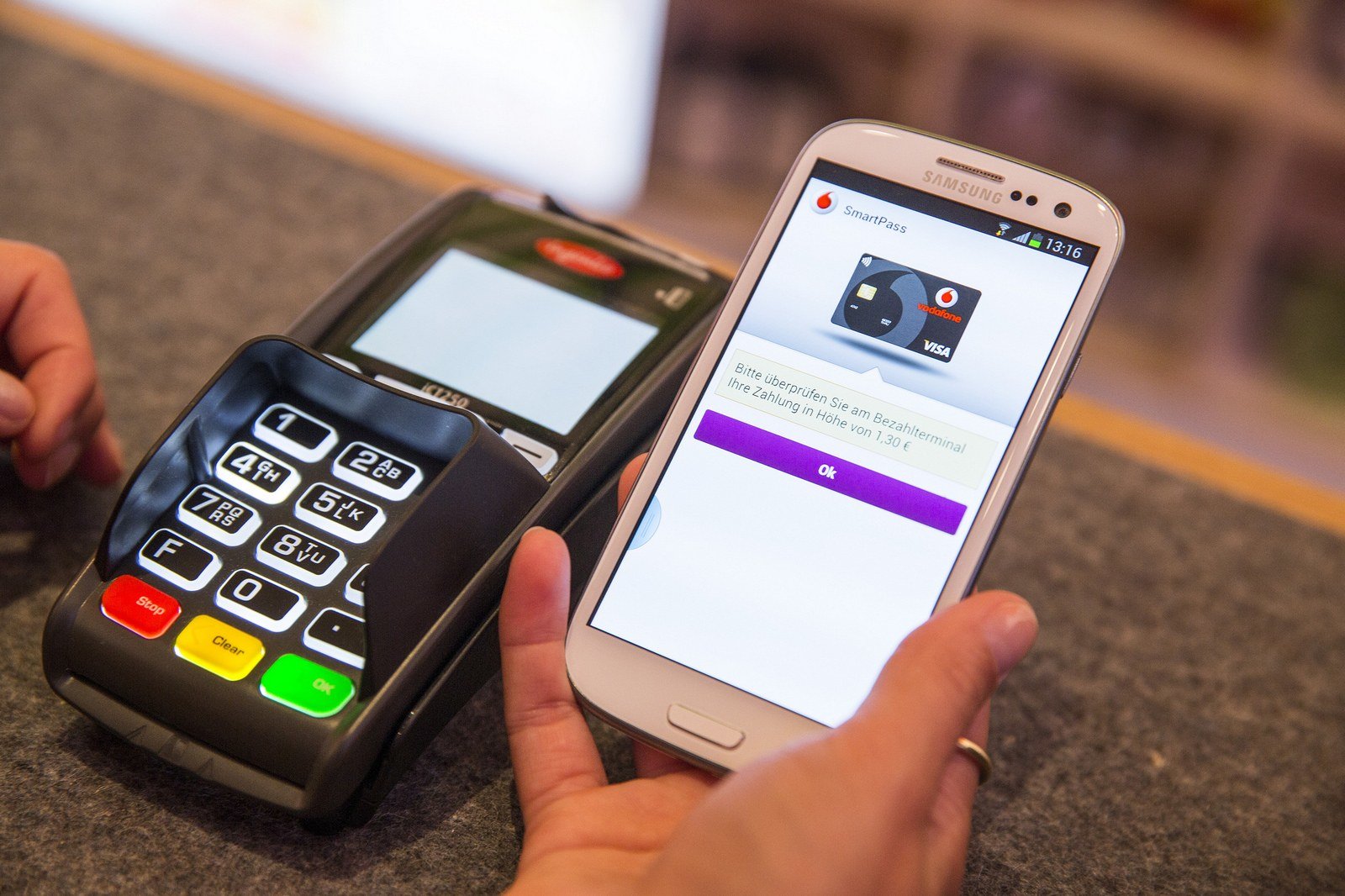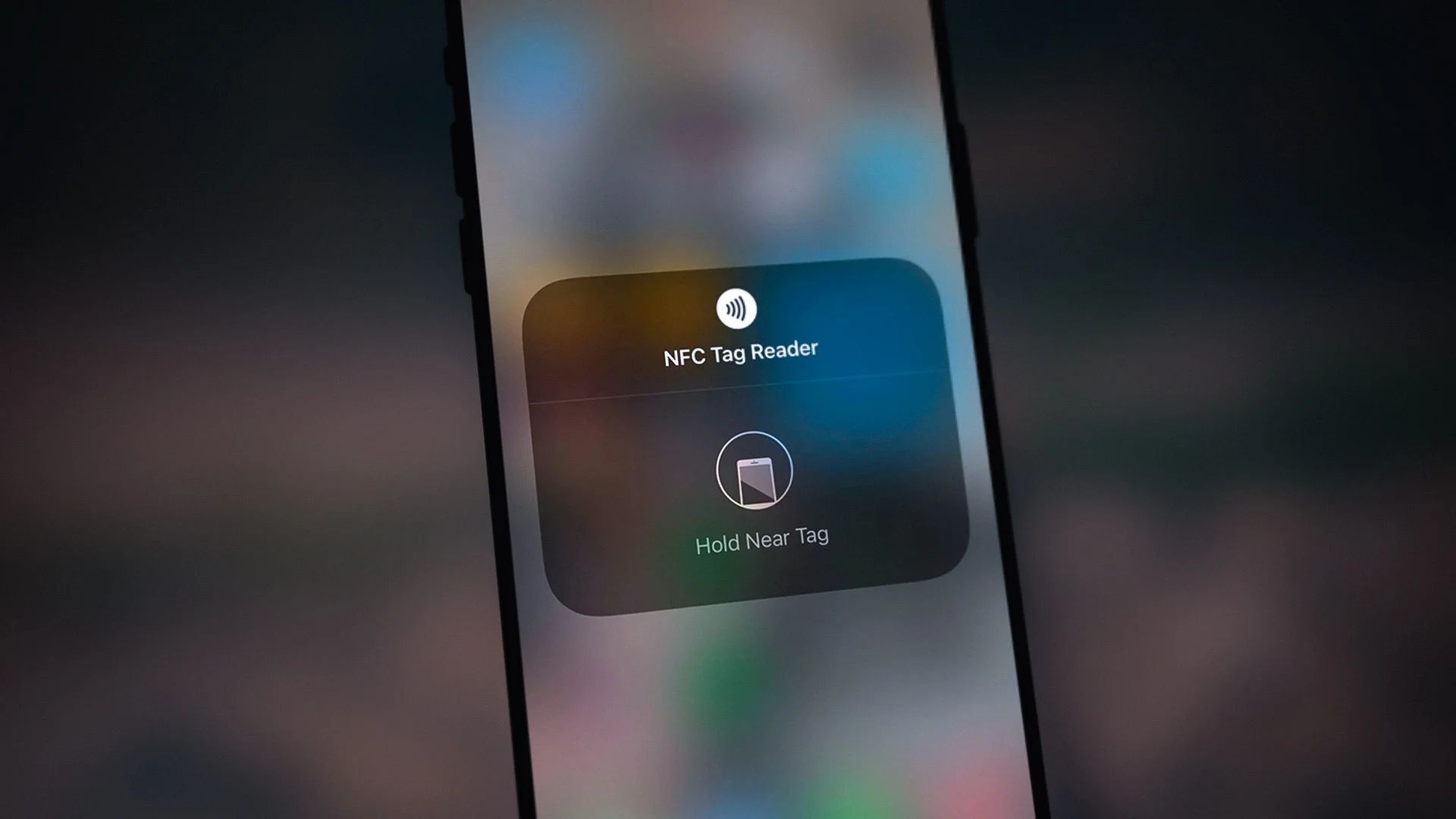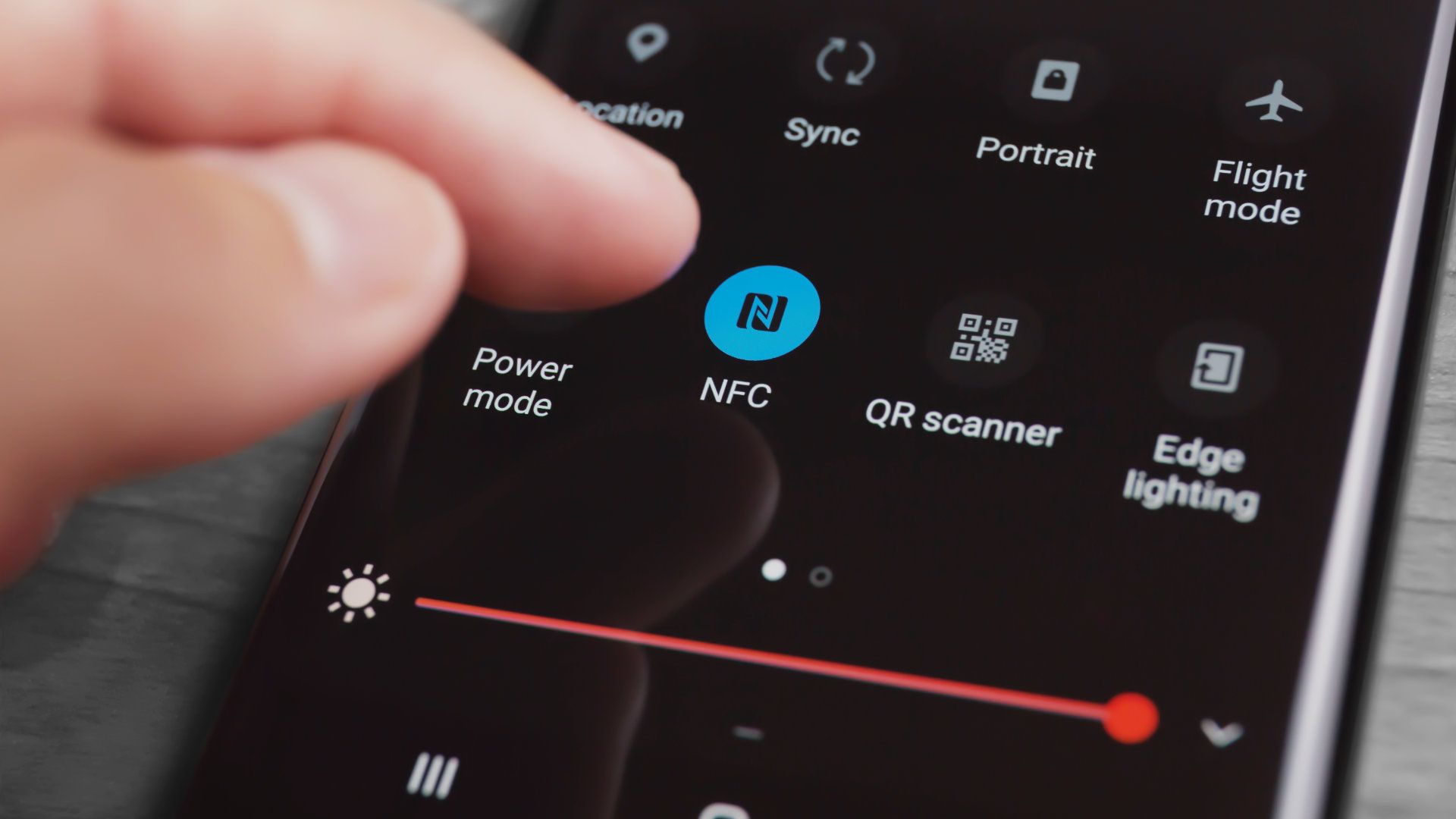Introduction
In today’s digital world, where technology continues to revolutionize the way we interact with the physical and virtual realms, Near Field Communication (NFC) has emerged as a powerful tool for connecting the offline and online worlds. NFC technology has found widespread application in various industries, from contactless payments to inventory management. One fascinating use case of NFC technology is the creation of website NFC tags.
Website NFC tags represent a fusion of physical and digital elements, allowing users to access specific web content simply by tapping their NFC-enabled device on a tag. These tiny, unobtrusive tags can be placed on physical objects and surfaces such as posters, business cards, brochures, or even products in retail stores. With just a tap, users can instantly access relevant online content, eliminating the need for manually typing URLs or scanning QR codes.
The convenience and seamless integration of website NFC tags make them an increasingly popular choice for businesses and individuals looking to enhance their online presence and provide engaging user experiences. Whether you’re a marketer, a business owner, or an individual looking to share content in a unique way, understanding website NFC tags and how to leverage their potential can be highly beneficial.
In this article, we will delve deeper into the world of website NFC tags. We will explore their functionality, benefits, and common applications. Additionally, we will discuss the process of creating website NFC tags and share best practices for maximizing their effectiveness. So, let’s dive in and unlock the potential of website NFC tags in the digital landscape.
NFC Technology: A Brief Overview
Near Field Communication (NFC) is a short-range wireless communication technology that enables devices to communicate with each other when they are in close proximity, typically within a few centimeters. It is a subset of radio-frequency identification (RFID) technology and operates on the 13.56 MHz frequency.
NFC technology has gained immense popularity due to its versatility and ease of use. It is widely implemented in various applications, including contactless payments, access control systems, public transportation, and data exchange. NFC-enabled devices, such as smartphones, tablets, and wearable devices, can interact with NFC tags, cards, or other NFC-enabled devices to facilitate seamless communication and data transfer.
The basic concept behind NFC is simple yet powerful. It enables two NFC-enabled devices to establish a connection by simply bringing them close together. This connection can be used to exchange data, perform transactions, or trigger specific actions. Unlike Bluetooth or Wi-Fi, NFC operates in close proximity, making it more secure and convenient for quick interactions.
NFC technology utilizes electromagnetic induction to enable communication between devices. When an NFC-enabled device, known as an initiator, comes close to an NFC tag or another NFC-enabled device, known as a target, a small amount of energy is induced in the target’s circuit. This allows the target to power itself and respond to the initiator’s request.
NFC supports three different modes of operation: reader/writer mode, peer-to-peer mode, and card emulation mode. In reader/writer mode, the NFC-enabled device acts as a reader to access data from NFC tags or cards. In peer-to-peer mode, two NFC-enabled devices can exchange data with each other. In card emulation mode, the NFC-enabled device behaves like an NFC card, allowing it to be used for contactless transactions and access control purposes.
The widespread adoption of NFC technology and the increasing number of NFC-enabled devices have paved the way for innovative applications, such as website NFC tags. These tags leverage the power of NFC to bridge the gap between physical objects and online content, offering a seamless and interactive experience for users. In the next section, we will explore in detail what website NFC tags are and how they work.
What is a Website NFC Tag?
A website NFC tag is a small physical object that contains an embedded NFC chip and is programmed to direct users to a specific website or online content when tapped with an NFC-enabled device. These tags can come in various forms, including stickers, cards, or even embedded within physical objects themselves.
The NFC chip embedded within the tag contains information about the website or online content it is associated with. When a user taps their NFC-enabled device on the tag, the device reads the information from the NFC chip and automatically launches the corresponding website or content in the device’s web browser or app.
One of the great advantages of website NFC tags is their simplicity. Unlike other technologies, such as QR codes, which require users to scan an image using their device’s camera, website NFC tags only require a simple tap. This ease of use makes website NFC tags accessible to a wider audience and eliminates the need for additional apps or scanning processes. Plus, NFC tags can be read even when the device is offline, providing a seamless user experience.
Website NFC tags are highly customizable, allowing you to tailor the user experience to your specific needs. You can program the NFC tags to direct users to a particular landing page on your website, a product page for a specific item, a promotional video, or any other online content you want to showcase. The possibilities are endless, and the flexibility of website NFC tags empowers businesses and individuals to deliver targeted and engaging experiences to their audience.
Furthermore, website NFC tags can be used alongside other marketing and advertising materials. You can place them on posters, brochures, business cards, product packaging, or even in physical stores. This creates a seamless connection between the physical and digital worlds, allowing users to conveniently access more information, make purchases, or engage with your brand online.
Now that we understand what website NFC tags are, let’s explore how they actually work and the technology that enables their functionality in the next section.
How Does a Website NFC Tag Work?
The functionality of a website NFC tag is rooted in the underlying technology of NFC. When an NFC-enabled device, such as a smartphone, is brought close to an NFC tag, the device’s NFC reader detects the tag and establishes a connection. This connection allows for the exchange of information between the device and the tag.
Website NFC tags typically contain an NFC chip, which stores data related to the website or online content they are associated with. This data is written onto the NFC chip during the programming phase. When a user taps their NFC-enabled device on the tag, the NFC reader on the device reads the information from the chip and initiates the corresponding action.
The action triggered by tapping an NFC tag can vary based on the configuration and programming of the tag. In the case of website NFC tags, the action is to open a specific website or online content on the user’s device. The NFC tag contains the URL or web address of the desired website, and the NFC reader in the device automatically launches the device’s web browser or app and directs it to that URL.
It’s important to note that the process of reading the NFC tag and launching the website happens seamlessly and instantly. The user does not need to manually open their browser or enter the URL. The NFC technology enables a touch-and-go experience, providing a quick and user-friendly way to access online content.
To ensure compatibility and seamless functionality, website NFC tags typically utilize standardized protocols and formats. The most commonly used format for website NFC tags is the NDEF (NFC Data Exchange Format) format, which allows for the storage and exchange of various types of data, including URLs. This format ensures that most NFC-enabled devices are capable of reading and interpreting the data stored on the tag.
In addition to directing users to specific websites, website NFC tags can also be programmed to perform additional actions. For example, they can trigger the download of a mobile app, initiate a phone call, send a pre-written email or text message, or even connect to a Wi-Fi network. The versatility of NFC technology allows for innovative and interactive experiences beyond simple website access.
Now that we understand how website NFC tags work, let’s explore the benefits that they offer in the next section.
Benefits of Using Website NFC Tags
Website NFC tags offer numerous advantages for businesses and individuals seeking to enhance their online presence and provide engaging user experiences. Let’s explore some of the key benefits of using website NFC tags.
1. Convenience: One of the main benefits of website NFC tags is their convenience. Users can simply tap their NFC-enabled device on the tag to access specific web content, eliminating the need for manual typing of URLs or scanning QR codes. This frictionless interaction provides a seamless user experience and encourages increased engagement.
2. Instant Access: Website NFC tags enable instant access to online content. Users don’t have to go through multiple steps or wait for a webpage to load. With just a tap, they are directly taken to the desired website or online resource, making it easier for them to explore further information or take desired actions.
3. Enhanced User Engagement: By incorporating website NFC tags into your marketing materials or physical products, you can create interactive experiences that captivate and engage your audience. Users can access additional information, product demos, videos, or promotions with a simple tap, fostering a deeper connection and increasing the likelihood of conversions.
4. Easy Content Updates: Unlike printed materials, website NFC tags allow for easy content updates. If you need to change the information or direct users to a different webpage, you can easily reprogram the NFC tags without the need to replace or reprint physical objects. This flexibility ensures that your messaging remains current and relevant.
5. Cross-Platform Compatibility: Website NFC tags are compatible with a wide range of NFC-enabled devices, including smartphones, tablets, and wearable devices. This broad compatibility ensures that your target audience can access the content regardless of the device they use. It also eliminates the need for users to download specific apps or have particular settings enabled.
6. Offline Accessibility: Another significant advantage of website NFC tags is their offline accessibility. NFC tags can be read even when the device is not connected to the internet. This means that users can access the content stored on the NFC tag regardless of their location or internet availability, enhancing convenience and user experience.
7. Data Tracking and Analytics: Website NFC tags can be used to track user interactions and gather valuable analytics data. By analyzing the usage patterns and engagement metrics, you can gain insights into user behavior, optimize your marketing strategies, and make informed business decisions.
Incorporating website NFC tags into your marketing campaigns and physical products provides a unique and interactive way to connect the physical and digital worlds. Their numerous benefits make them an effective tool for driving engagement, increasing conversions, and enhancing the overall user experience.
Common Applications of Website NFC Tags
Website NFC tags have a wide range of applications across various industries. Let’s explore some of the common use cases where website NFC tags are effectively utilized.
1. Marketing and Advertising: Website NFC tags can be integrated into marketing and advertising materials to provide interactive experiences to potential customers. Placing NFC tags on posters, flyers, brochures, or product packaging allows users to quickly access additional information, promotional offers, or product details by simply tapping their NFC-enabled devices.
2. Retail and E-commerce: NFC tags are increasingly being used within retail and e-commerce environments. By placing NFC tags on product tags or shelves, customers can tap their devices to quickly access product reviews, specifications, or purchasing options. NFC tags can also be utilized for contactless payments, making the checkout process fast and convenient.
3. Events and Conferences: NFC tags are excellent tools for enhancing attendee experiences at events and conferences. By distributing NFC-enabled badges or wristbands, attendees can tap them to access event schedules, speaker bios, interactive maps, and networking opportunities. NFC tags can also facilitate contactless ticketing, reducing long queues and improving security.
4. Museums and Galleries: Website NFC tags can be placed next to exhibits in museums and galleries, providing visitors with in-depth information, audio guides, or digital tours. The ease of use and instant access offered by NFC tags enhance the educational experience and encourage visitors to explore and engage more with the displays.
5. Real Estate: NFC tags can be used in the real estate industry to provide potential buyers with detailed property information. By placing NFC tags on “For Sale” signs or property brochures, interested parties can instantly access virtual tours, floor plans, or agent contact information, simplifying the house hunting process and attracting more prospective buyers.
6. Hospitality and Tourism: NFC tags can be deployed in hotels, restaurants, and tourist attractions to enhance guest experiences. NFC tags placed in hotel rooms or restaurant menus can provide guests with access to room service, digital concierge services, or online reservations. In tourist attractions, NFC tags can offer visitors historical information, multimedia content, or interactive games.
7. Education and Training: Website NFC tags are used in educational settings to enable quick access to study materials, course enrollment, or interactive assignments. Students can tap NFC tags on educational resources or classroom materials to instantly access relevant online content, fostering a more interactive and engaging learning environment.
These are just a few examples of the many ways in which website NFC tags are being utilized. Their versatility and ease of implementation make them valuable tools for improving user experiences and driving engagement across various industries.
How to Create a Website NFC Tag
Creating a website NFC tag involves a few steps to ensure that the tag is programmed with the correct information. Here’s a general guide on how to create a website NFC tag:
1. Choose the Right NFC Tag: Start by selecting the appropriate NFC tag for your needs. Consider factors such as size, durability, and compatibility with different devices. NFC tags come in various forms, including stickers, cards, and keychains. Ensure that the chosen tag has enough memory capacity to store the desired data.
2. Determine the Content: Decide on the content that you want the NFC tag to direct users to. This could be a specific webpage, a landing page, a product page, or any other online resource. Make sure the content is mobile-friendly and provides value to the users.
3. Encode the NFC Tag: To encode the NFC tag, you will need an NFC writer app or software. There are many options available for both Android and iOS devices. Open the NFC writer app and follow the instructions to program the desired content onto the NFC tag. This typically involves entering the URL of the webpage or online resource.
4. Test the NFC Tag: After encoding the NFC tag, it’s essential to test its functionality using an NFC-enabled device. Ensure that the tag successfully directs the device to the intended webpage or content. Check for any errors or inconsistencies and make necessary adjustments if required.
5. Place the NFC Tag: Once the NFC tag is programmed and tested, decide where you want to place it for users to access. Consider locations that are easily visible and accessible, such as posters, brochures, business cards, or product packaging. Ensure that the tag is securely attached and well-protected to ensure longevity.
6. Promote and Educate Users: Finally, promote the presence of the NFC tags and educate users on how to use them. Include clear instructions and visual cues on how to tap the NFC tag with their device. Consider providing additional information or incentives to encourage users to engage with the NFC tags, such as exclusive discounts or extra content.
Remember to regularly monitor and update the content associated with the NFC tags as needed. This will ensure that users always have access to the most relevant and up-to-date information.
By following these steps, you can successfully create and deploy website NFC tags to enhance user experiences, drive engagement, and provide seamless access to online content.
Best Practices for Using Website NFC Tags
To make the most out of your website NFC tags and ensure a seamless user experience, it’s important to follow some best practices. These practices will help optimize engagement, increase conversions, and deliver a positive user interaction. Here are some key best practices for using website NFC tags:
1. Clear and Concise Messaging: Keep the messaging on your NFC tag clear, concise, and enticing. Use short and compelling text to communicate what the user can expect when they tap the tag. Avoid cluttering the tag with unnecessary information and focus on highlighting the value proposition.
2. Strategic Placement: Consider the placement of your NFC tags carefully. Choose locations where your target audience is most likely to encounter them, such as high-traffic areas or near relevant products or displays. Ensure that the tags are easily visible and accessible, avoiding obstructions or hidden placements.
3. Mobile-friendly Content: The web content or landing page associated with the NFC tag should be optimized for mobile devices. Make sure the content loads quickly, is easy to navigate, and provides a seamless user experience on different screen sizes. Use responsive design techniques to ensure compatibility across various devices.
4. Call-to-Action: Include a clear call-to-action on your NFC tag. Encourage users to tap the tag to access exclusive content, make a purchase, or take a specific action. A strong and compelling call-to-action can significantly boost engagement and conversion rates.
5. A/B Testing: Experiment with different variations of your NFC tag content and placement to determine what resonates best with your audience. Conduct A/B testing by comparing the performance of different tags to optimize your strategy and drive better results. Analyze user engagement and conversion metrics to make data-driven decisions.
6. Regular Maintenance: Keep track of the performance and functionality of your NFC tags. Regularly test the tags to ensure they are properly functioning and directing users to the correct content. If any issues or errors arise, promptly address and rectify them to provide a seamless user experience.
7. Analytics and Tracking: Utilize analytics tools to track and measure the performance of your NFC tags. Monitor user interactions, conversion rates, and other important metrics to gain insights into the effectiveness of your tag placements and content. Use this data to refine your strategy and improve future campaigns.
8. User Education and Support: Provide clear instructions on how to use the NFC tags to ensure that users understand the process. Consider adding visual cues or signage near the tags to guide users. Additionally, offer support channels, such as FAQs or customer service contact information, in case users face any issues or have questions.
By following these best practices, you can effectively leverage website NFC tags to engage users, drive conversions, and enhance the overall user experience. Continuously monitor and improve your approach based on user feedback and data analysis to maximize the impact of your NFC tag marketing strategy.
Conclusion
Website NFC tags offer an innovative and convenient way to bridge the physical and digital worlds, providing users with instant access to online content with just a tap of their NFC-enabled device. The simplicity and effectiveness of website NFC tags make them a valuable tool for businesses and individuals looking to enhance their online presence and engage their audience in a unique manner.
In this article, we explored the concept of website NFC tags and how they work. We discussed the benefits of using website NFC tags, including convenience, instant access, enhanced user engagement, and offline accessibility. We also explored common applications of website NFC tags across various industries, such as marketing, retail, events, and education.
To create a website NFC tag, it is important to carefully select the right NFC tags, encode them with the desired content, and test their functionality. Strategic placement of NFC tags and following best practices, such as clear messaging, mobile-friendly content, and tracking analytics, can optimize user experiences and drive better results.
As technology continues to advance and consumer expectations evolve, website NFC tags have become a valuable tool for businesses and individuals seeking to provide seamless and engaging user experiences. By leveraging the power of NFC technology, website NFC tags enable users to effortlessly access relevant online content, resulting in higher engagement and increased conversions.
Whether you’re a marketer looking to boost customer interactions, a retailer aiming to provide in-depth product information, or an event organizer striving to enhance attendee experiences, website NFC tags can be a powerful asset. By integrating website NFC tags into your marketing materials, physical products, or educational resources, you can create more interactive and immersive experiences that captivate your audience.
In conclusion, website NFC tags have opened up new possibilities for connecting the offline and online worlds. Their convenience, versatility, and simplicity make them a valuable tool for businesses and individuals seeking to enhance user experiences and create impactful interactions. Embrace this technology to unlock the potential of website NFC tags in your marketing efforts and stay at the forefront of digital innovation.







